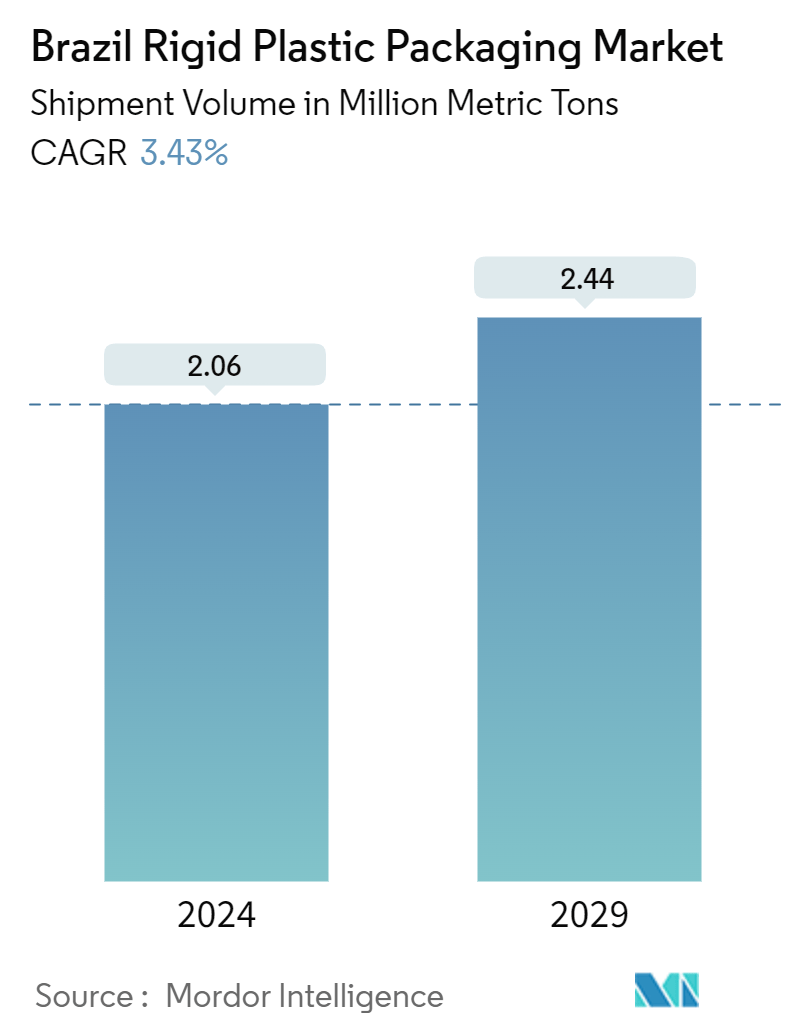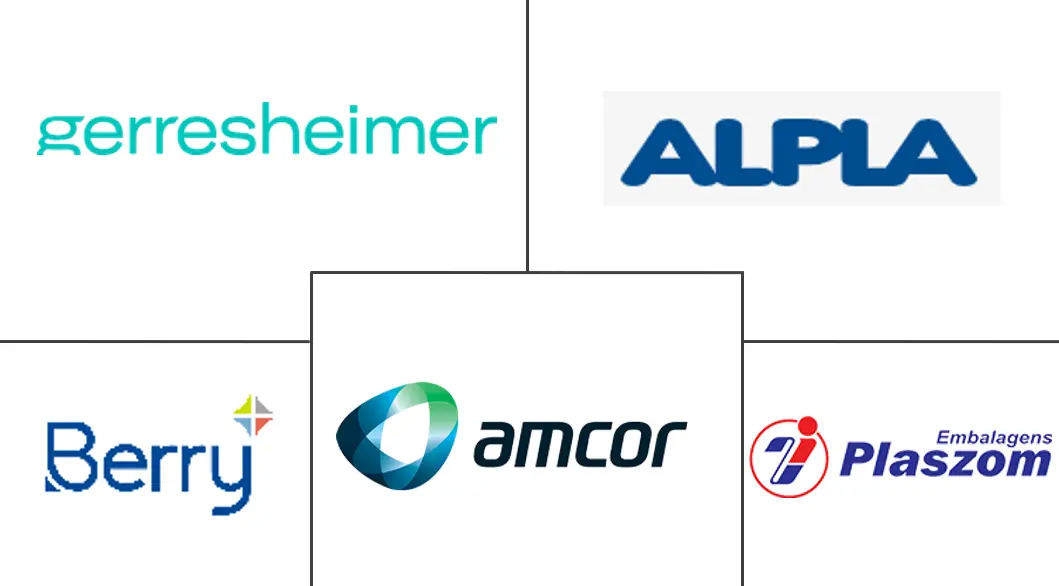Market Size of Brazil Rigid Plastic Packaging Industry

| Study Period | 2022 - 2029 |
| Base Year For Estimation | 2023 |
| Forecast Data Period | 2024 - 2029 |
| Historical Data Period | 2022 - 2022 |
| CAGR (2024 - 2029) | 3.43 % |
| Market Concentration | Medium |
Major Players
*Disclaimer: Major Players sorted in no particular order |
Brazil Rigid Plastic Packaging Market Analysis
The Brazil Rigid Plastic Packaging Market size in terms of shipment volume is expected to grow from 2.06 Million metric tons in 2024 to 2.44 Million metric tons by 2029, at a CAGR of 3.43% during the forecast period (2024-2029).
Brazil is the largest economy in Latin America and ranks among the world's largest. In 2023, bolstered by robust domestic demand and exports, Brazil's gross domestic product (GDP) saw a 2.9 percent uptick from the prior year.
- USDA reports that Brazil's expanding food processing sector is driving up the demand for rigid packaging. Food processing contributes 10.8 percent to the national GDP. A robust domestic market and substantial export volumes fuel the need for various rigid packaging solutions, such as bottles, jars, trays, and containers. Moreover, Brazil's burgeoning retail sector is further energizing the food industry. The Brazilian Association of Supermarkets estimates that in 2023, supermarket revenues reached a notable USD 140 billion, underscoring the sales momentum for packaged and processed foods.
- Brazil's surging tourism, with tourists spending more on food and beverages, amplifies the demand for rigid plastic packaging solutions, notably trays and containers. The Brazilian Central Bank highlights that in 2023, international tourists spent a record USD 6.9 billion in Brazil, boosting the demand for local products.
- The rising demand for PE and PET materials in Brazil's packaging applications is significantly propelling market growth. Additionally, there's a robust demand for other rigid plastic products, such as trays, crates, and pallets, especially in industrial applications. The personal care and cosmetics sector predominantly uses rigid plastics for packaging, with an increasing reliance on plastic bottles and jars driving market expansion.
- Nonetheless, heightened environmental concerns regarding plastic usage are steering Brazil towards alternative packaging solutions. Packaging manufacturers are increasingly favoring flexible plastic packaging as a substitute for rigid solutions, thanks to its versatility. Moreover, flexible packaging's reduced material requirement offers a notably superior product-to-package ratio compared to rigid options.

